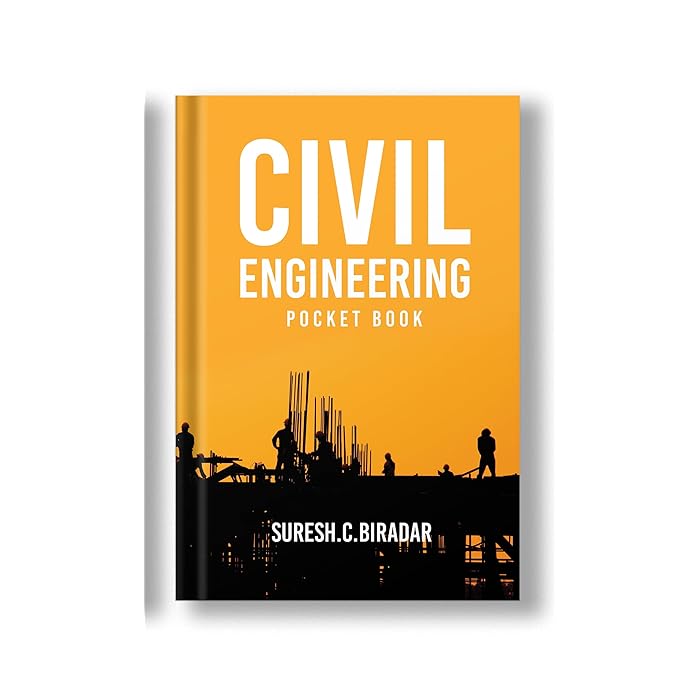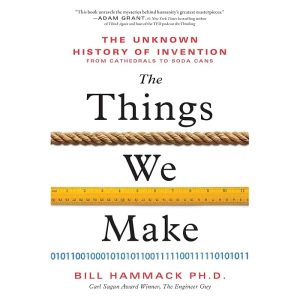Description
A **Civil Engineering Pocket Book** is a handy reference guide packed with important formulas, tables, codes, and data relevant to civil engineering. It is an essential tool for engineers, students, and professionals to quickly access technical information needed during day-to-day tasks, exams, or while working on projects.
Here are the typical contents you might find in a Civil Engineering Pocket Book:
### 1. **Material Properties**
– **Concrete**: Strength, mix proportions, workability, and curing times.
– **Steel**: Types, yield strength, modulus of elasticity, and tensile strength.
– **Soil**: Properties like grain size, compaction, and shear strength.
### 2. **Structural Design**
– **Beam and Column Design**: Formulas and methods for bending, shear, and axial forces.
– **Trusses**: Analysis of trusses, joints, and member forces.
– **Slabs**: One-way and two-way slab calculations.
– **Foundations**: Types, bearing capacity, and settlement analysis.
### 3. **Surveying**
– **Levelling**: Benchmarks, contouring, and differential levelling techniques.
– **Distance Measurement**: Methods such as chain surveying, taping, and EDM.
– **Angles and Bearings**: Calculation of angles, bearings, and coordinate transformations.
### 4. **Fluid Mechanics**
– **Hydraulic Structures**: Formulae for weirs, spillways, and dams.
– **Flow in Pipes**: Darcy-Weisbach equation, Hazen-Williams formula, and flow rate calculations.
– **Fluid Properties**: Viscosity, density, and Reynolds number.
### 5. **Transportation Engineering**
– **Geometric Design of Roads**: Cross-sections, road curves, super-elevation, and sight distance.
– **Traffic Engineering**: Traffic flow theory, capacity analysis, and signal design.
– **Pavement Design**: Types, thickness design, and load distribution.
### 6. **Environmental Engineering**
– **Water Treatment**: Filtration, disinfection, and sedimentation processes.
– **Sewage Treatment**: Biological treatment, activated sludge process, and BOD.
– **Waste Disposal**: Solid waste management methods and recycling standards.
### 7. **Construction Management**
– **Cost Estimation**: Unit rates, Bill of Quantities (BOQ), and cost calculations.
– **Scheduling**: Gantt charts, CPM, and PERT.
– **Safety Codes**: Safety regulations, PPE requirements, and worksite safety measures.
### 8. **Building Codes & Standards**
– **IS Codes**: Indian Standard codes for materials, structures, and construction practices.
– **ASTM, BS Standards**: International standards for construction materials and methods.
– **Design Codes**: Structural design codes like AISC, Eurocode, etc.
### 9. **Geotechnical Engineering**
– **Soil Testing**: Compaction tests, shear strength tests, and consolidation tests.
– **Slope Stability**: Methods of analysis and stability charts.
– **Foundation Design**: Shallow and deep foundations, pile load testing.
### 10. **Sustainability & Green Building Design**
– **Energy-Efficient Design**: Passive solar design, insulation materials, and energy-saving systems.
– **Sustainable Materials**: Recycled concrete, green steel, and eco-friendly construction methods.
### 11. **Miscellaneous Formulas**
– **Geometric Formulas**: Volume of solids, surface area calculations.
– **Hydraulic Formulas**: Bernoulli’s equation, Manning’s formula for open channel flow.
– **Structural Analysis**: Moment-curvature relationships, shear and moment diagrams.
### Popular Civil Engineering Pocket Books
– **”Civil Engineering Handbook” by P. N. Khanna** – A comprehensive guide for practical reference.
– **”Civil Engineering Pocket Book” by R. K. Bansal** – A widely used compact reference for civil engineers.
– **”Handbook of Civil Engineering Calculations” by Tyler Hicks** – Another useful reference covering a wide range of civil engineering topics.
These pocket books are typically small, easy to carry, and packed with a wealth of information to help engineers perform calculations, refer to codes, and ensure that designs comply with regulations.





Reviews
There are no reviews yet.